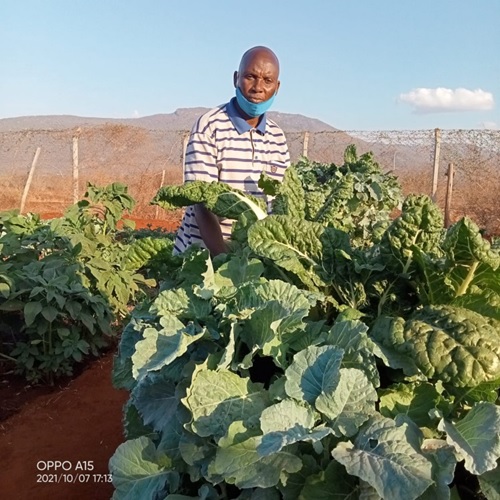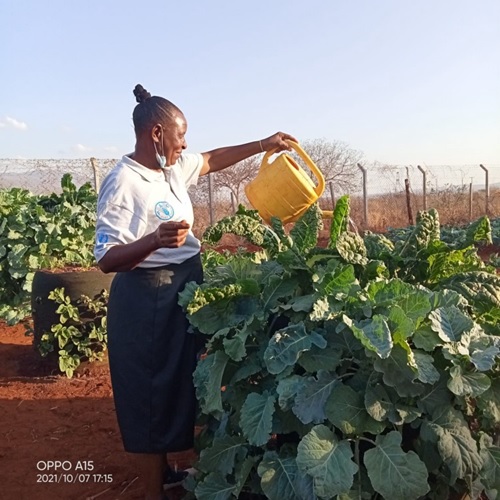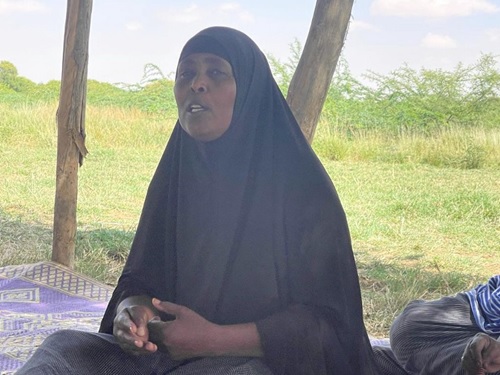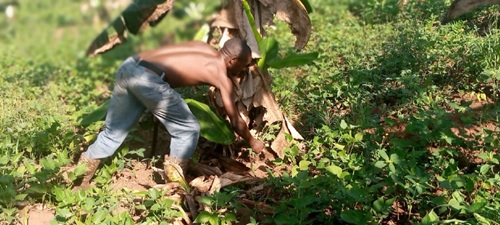By Collison Lore, Hussien Mohamed, Linah Mwamachi and
Ceaser Mukasa
AS World leaders, policy makers and activists, enter solemn negotiations at the COP26 in Glasgow, many pastoral and agro-pastoral communities in Eastern Africa are facing recurrent droughts and shortage of food. Kenya, Ethiopia and Somalia are currently facing severe drought.
The effects of climate change on agriculture, livestock and fisheries, is a vital factor behind a solid rise in hunger, that is eroding years of progress. Consequently, in the absence of aggressive efforts to help farmers adapt, climate impacts on agriculture in regions already suffering high rates of poverty and malnutrition, will make it impossible to achieve the global Sustainable Development Goals (SDGs) — pledging zero hunger and an end to extreme poverty by 2030.

Engaging Farmers in Eastern Africa
Engagement with farmers in Eastern Africa on the possible impact of COP26 in their struggle against climate change, which affects them disproportionately compared to their counterparts elsewhere, generates a mixed bag of responses. The IGAD Climate Centre (ICPAC) has worked closely with key partners, communities and media in addressing these challenges. At the start of COP26, the views of farmers in different parts of Eastern Africa were sought and their responses paint a picture of divergence.
Kenya
ICPAC and media partners, spoke to farmers in Taita Taveta County, Kenya, about climate change and COP26. Taita Taveta has experienced changes and variabilities in climate for the last four decades. The long-term environmental changes include soil degradation, reduction of water volumes in rivers, landslides, deforestation, drying of wells and rivers, and increased human wildlife conflicts.
Agriculture is the main source of livelihood in Taita Taveta. It contributes about 95% of the household incomes and more than 80% of employment. The agriculture sector is greatly affected by droughts, floods, unpredictable and unreliable rainfall, and high temperatures brought about by climate change.
Farmers adapt to climate change by planting trees, practicing soil and water conservation, water harvesting, staggered cropping, and pasture conservation, including changing crop and livestock types. However, the adaptive capacity of farmers remains low. Therefore, there is need to support adoption of strategies such as agricultural insurance, increased irrigation, and mechanization.

Taita Taveta County, Kenya
Elijah Mleghwa of Mbulia Farmers Field School, Taita Taveta County, Kenya says climate change has affected agriculture “Food security will be a nightmare if action is not taken immediately. Climate change has altered rain seasons and weather patterns, it has also affected agriculture and environment conservation that has pushed many to the forest and depleted forest cover”. Mleghwa’s expectations are that, governments globally will channel substantial funds to address the ravages of climate change.

Taita Taveta County, Kenya
Winne Ndu’ngu a woman farmer in Manga, Taita Taveta County, Kenya says climate change has pushed communities in her locality to the wall, because many have opted for easy means of living like charcoal burning and selling firewood. These practices lead to further degradation and increased vulnerability, further fueling climate change. “I wish to see governments apportion considerable resources to address this issue that is eroding our livelihoods. Only significant action will save the planet and all our livelihoods”.
Somalia
Climate change and variability remains a threat to sustainable development. The available data from Puntland State, Somalia, shows that there is significant variability not only the annual rainfall received, but also from one month to another.
Inter-annual variability patterns further show evidence of recurrences of rainfall extremes associated with floods and droughts, as well as increasing frequency and severity of extreme events such as drought and floods.

Nadifa Mohamed, a mother of five resides in Puntland state of Somalia, grew up in a local community a short distance from Garowe, capital of Puntland. She recalls rains were sufficient in this area of Somalia in 1980s and crops were grown through rain fed agriculture. Migration of pastoralists was minimal, and pasture for livestock was available in their locality.
The reduced and erratic rainfall led Nadifa and her family to turn to supplementary irrigation farming. They have started digging shallow wells in their farm in Jibagale village. The challenges however remain immense owing to climate change. During prolonged dry seasons the shallow wells dry up impacting negatively on crop production.
Nadifa is well aware of all global climate related conferences. “I am aware of the COP26 summit currently underway in Glasgow. However, I do not expect that this conference will have any positive impact on our situation on the ground. I have been following all COP summits and I recall the Paris Climate Conference but I am sure that this meeting will also end with profligate dinners in gleaming venues. I do not believe that the resolutions of this summit will change anything at my farm level here at Jibagale”.
Uganda
Uganda has mostly a tropical climate characterized by stable rainfall patterns. However, the effects of climate change have turned the seasons around with the country experiencing shorter or longer rains and harsher droughts — especially in the eastern and north-eastern Uganda. Uganda is experiencing significant impacts of climate change, which include changing weather patterns, drop in water levels, and increased frequency of extreme weather events like floods, as well as drought, whose social economic impacts make communities very vulnerable.

Isa Makumbi, a farmer in Nakaseke District, Uganda, knows quite well how seasons drift based on historical trends, with a clear memory of when things started falling apart. His two decades experience explains his in-depth knowledge of the local climate.
“The long dry spells began in the late 1990’s when we lost our food, animals died because we did not have sufficient pasture, while our children were also malnourished”. Makumbi recalls.
Makumbi argues that “We cut all the forests that we had, to sell charcoal. We cleared all the bush because there were wild animals that would destroy our food and homes. This, was a mistake. We were looking at money.”
On the COP26 conference, Makumbi thinks his power is limited. He says, governments should encourage the people to plant more trees making it mandatory for any landowner in Uganda.
Collison Lore, Hussien Mohamed, Linah Mwamachi and
Ceaser Mukasa
Contact email: [email protected]
We welcome the submission of all articles for possible publication on WardheerNews.com. WardheerNews will only consider articles sent exclusively. Please email your article today . Opinions expressed in this article are those of the author and do not necessarily reflect the views of WardheerNews.
WardheerNew’s tolerance platform is engaging with diversity of opinion, political ideology and self-expression. Tolerance is a necessary ingredient for creativity and civility.Tolerance fuels tenacity and audacity.
WardheerNews waxay tixgelin gaara siinaysaa maqaaladaha sida gaarka ah loogu soo diro ee aan lagu daabicin goobo kale. Maqaalkani wuxuu ka turjumayaa aragtida Qoraaga loomana fasiran karo tan WardheerNews.
Copyright © 2024 WardheerNews, All rights reserved


